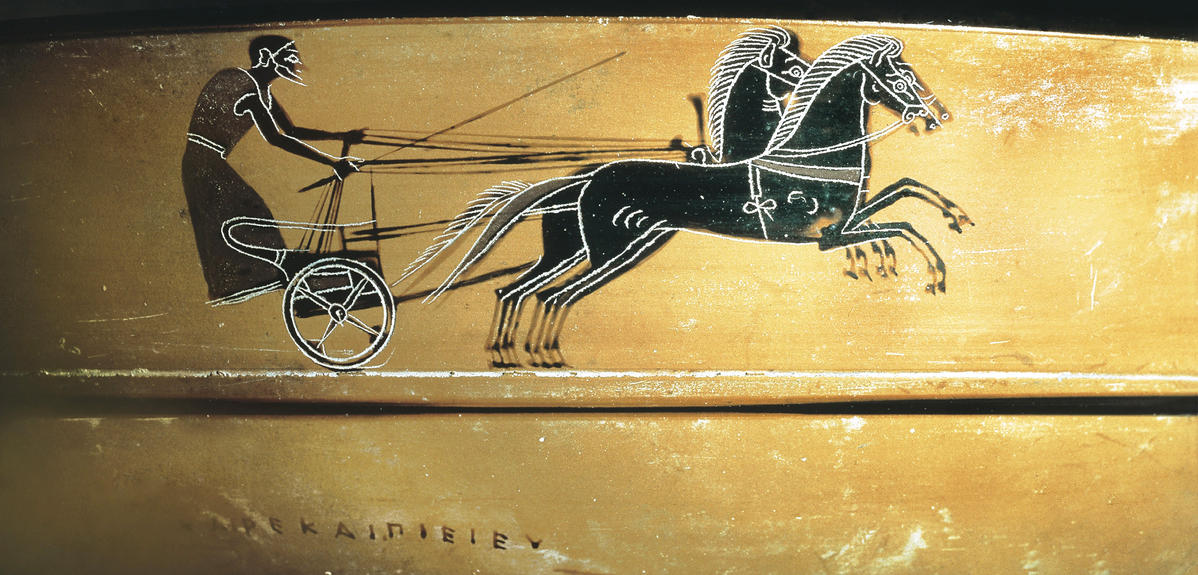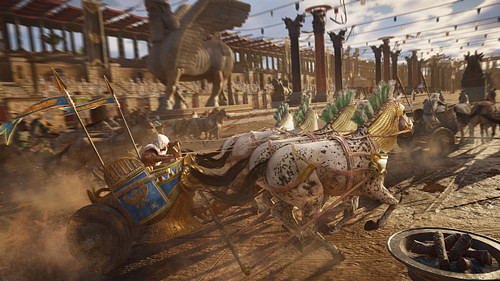


Two straps that crossed high at the upper back, prevented the xystis from "ballooning" during the race. It fell to the ankles and was fastened high at the waist with a plain belt. A chariot race was also said to be the event that founded the Olympic Games according to one legend, King Oenomaus challenged his daughter Hippodamia's suitors to a race, but was defeated by Pelops, who founded the Games in honour of his victory.

The race, which was one lap around the stump of a tree, was won by Diomedes, who received a slave woman and a cauldron as his prize. The participants in this race were Diomedes, Eumelus, Antilochus, Menelaus, and Meriones. It is known from artistic evidence on pottery that the sport existed in the Mycenaean world, but the first literary reference to a chariot race is the one described by Homer in Book 23 of the Iliad, at the funeral games of Patroclus. It is unknown exactly where chariot racing began, but it may have been as old as chariots themselves. Some of the organizational aspects of chariot racing also paralleled current practices in professional sports. Often dangerous to both drivers and horses, who frequently suffered serious injury and even death, the sport generated strong spectator enthusiasm comparable to modern-day interest in motor sports.


 0 kommentar(er)
0 kommentar(er)
